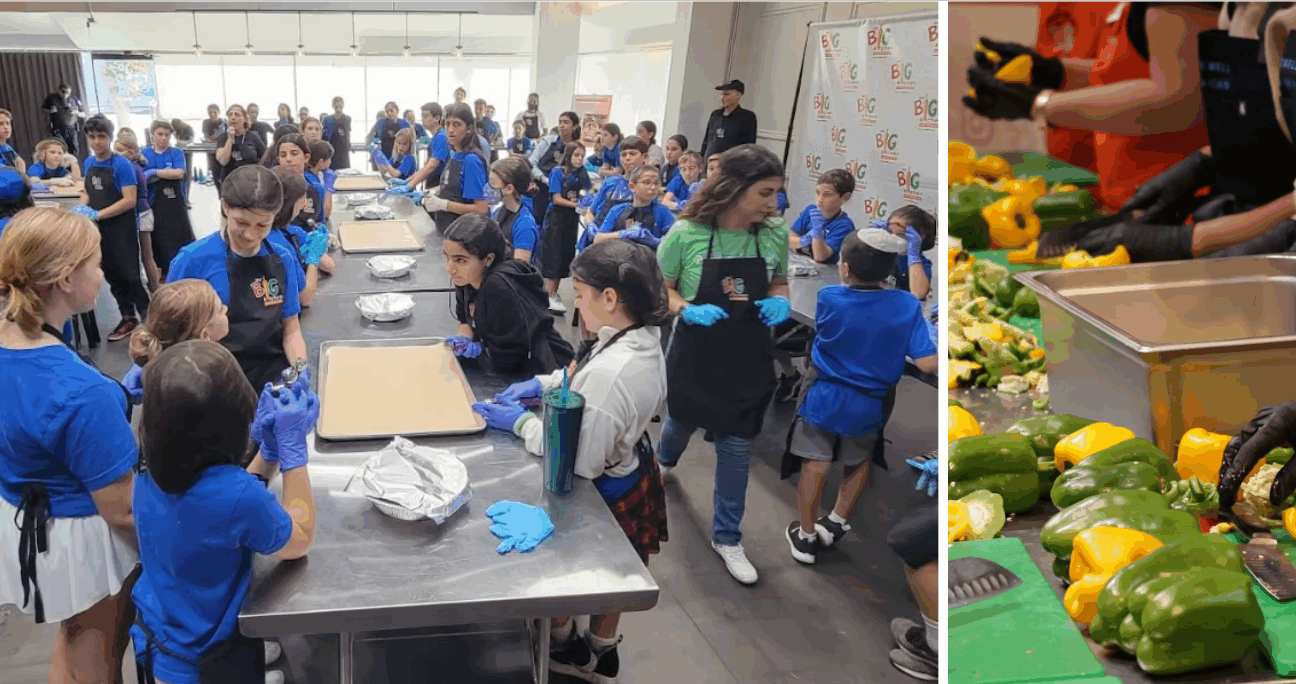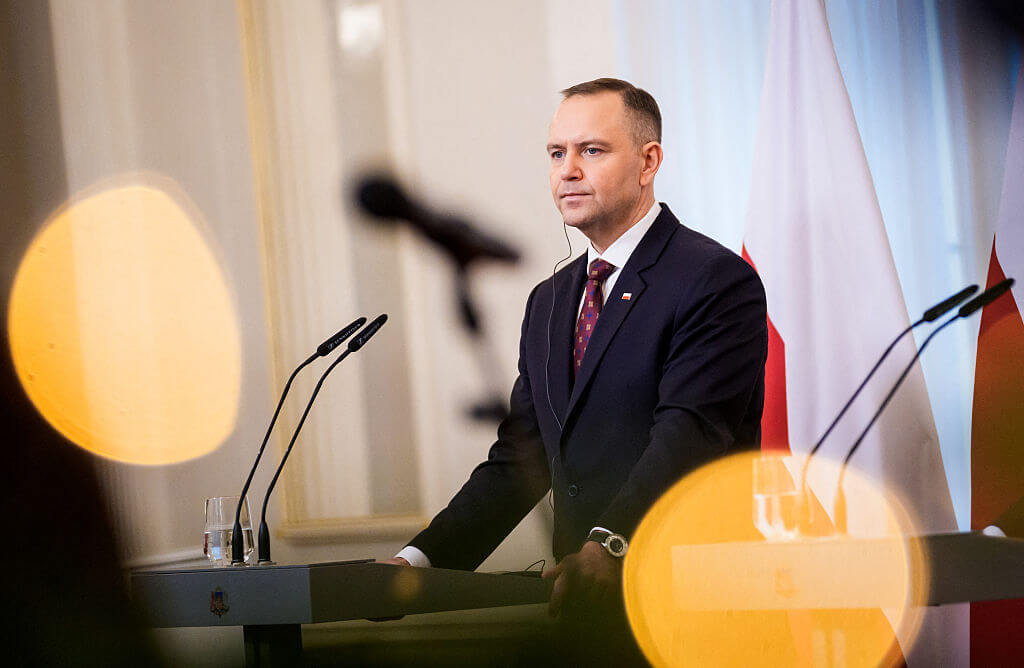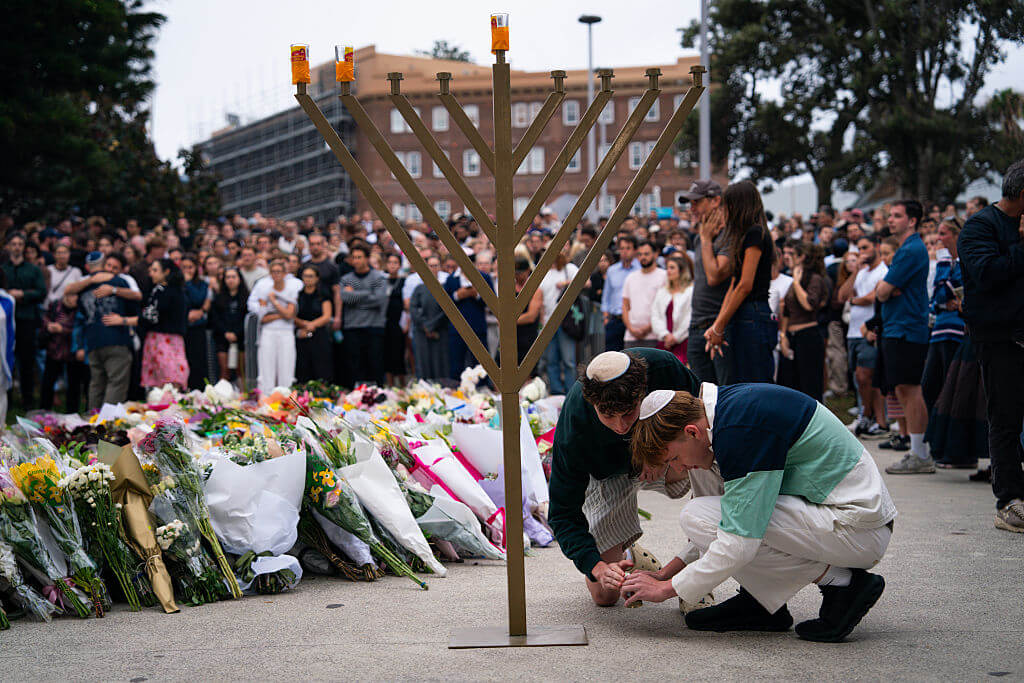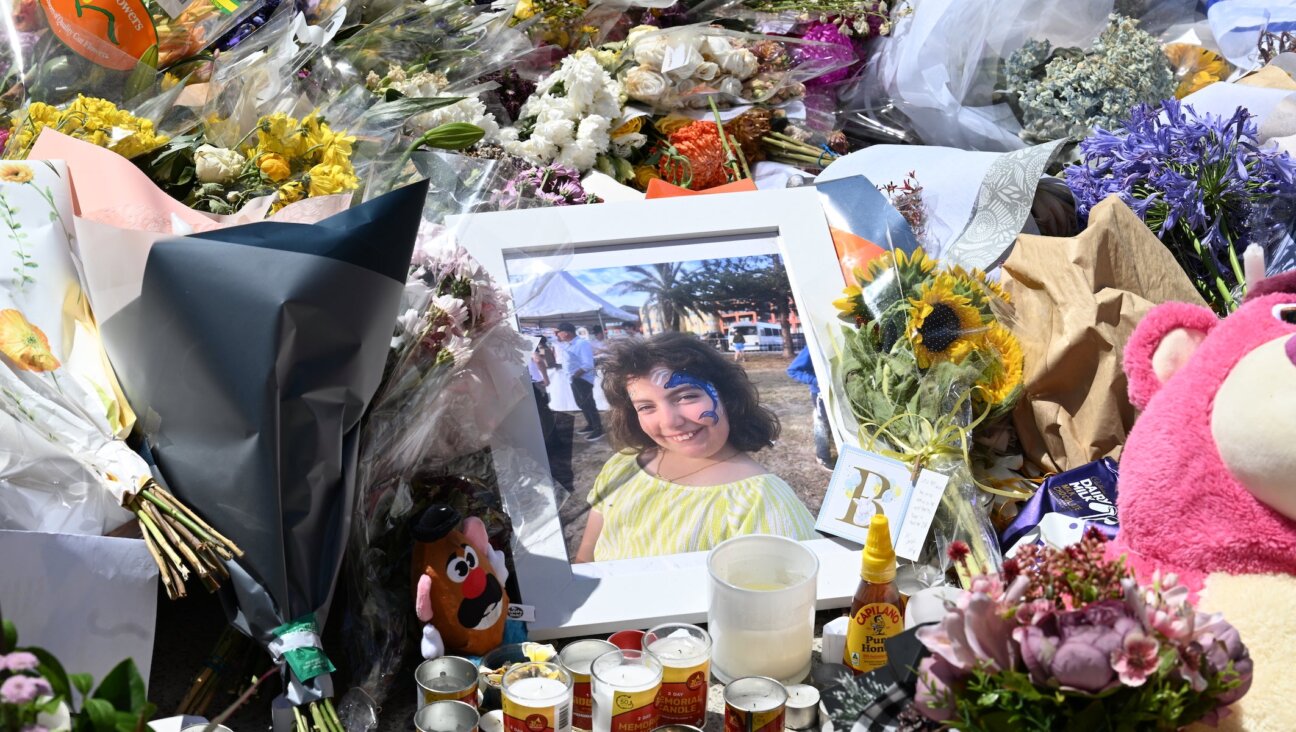In that horrific video of a man digging his own grave, Israelis are seeing something that Americans aren’t
In the American media, viewers are offered only a disturbing glimpse of what Israelis have been watching over and over

A clip from a video released by Hamas of Israeli hostage Evyatar David looking weak and malnourished. Photo by Getty Images
Just before heading to synagogue on Tisha B’Av this past Saturday night to hear Eicha, or the Book of Lamentations, I opened an email from a friend in Tel Aviv. It was titled: “Have you seen this? I didn’t feel I could share with other friends.”
I clicked and saw that my friend had added a brief note before a link: “In the video, David can be seen crossing off days on a makeshift calendar hung up on the side of an underground Gaza tunnel.”
That note did not prepare me for what I was about to see — the full propaganda film of Evyatar David, a young man who has been held hostage by Hamas since Oct. 7, 2023. The difference between seeing a still photograph and watching the entire video cannot be emphasized enough. That difference happens to be the gap between English-language and Hebrew media.
In The New York Times, you have to scroll all the way down to see the small screenshot of the 24-year-old David, but that is an entirely different experience from the nearly five-minute video most Israelis have watched, and are watching over and over.
To describe David as emaciated is also not enough.
He looked obviously and intentionally starved, for a very long time, and he was barefoot in a hot tunnel, beyond weak, and digging his grave. Just the minutes of the video were excruciating; I cannot imagine nearly two years of this. On the wall, a makeshift calendar. In the video, he detailed what he had eaten — or not eaten — each day in the month. He mentioned that there were days when he received no food; sometimes two days went with no food. As for what he did eat for the entire month?
Lentils. That’s it.
He is alone in the video, with nothing to pass the time — no books, radio, television, nothing.
“This is not fiction, this is real. There’s no food,” David says — or more accurately, is forced to say. He speaks in Hebrew. But then the hand of the captor appears to give him his food, a can of lentils. The large hand, and the muscular, well-fed arm attached to it, struck me. It is that hand and arm that would be discussed on Israeli television, and mentioned by hostage families. That huge hand next to the weak, emaciated, near-death Evyatar David.
The lies and the truth, I thought, as I watched that hand, handing over one small can for two days’ food.
After Tisha B’Av, I found myself watching news Channel 12 on Israeli television—it was replaying this video, and that of hostage Ram Braslovski, collapsed on the floor, over and over again.
“There should be a trigger warning,” the American young woman watching with me said, as she turned away.
He’s “like a living skeleton buried alive,” Israeli commentators were saying about Evyatar David. I knew that plenty of people watching, like me, had relatives who were forced to dig their own graves before being shot. That was what happened to my grandfather’s four brothers, and to his parents, who were removed from their home in Germany.
I saw these videos repeating on Israeli news, devastating everyone who watched. Evyatar David’s father was interviewed; so was the father of Ram Braslovski. David and Braslovski were kidnapped from within Israel, at the Nova music festival; other hostages were kidnapped from their homes.
Evyatar David appeared briefly in a video during a Hamas hostage return, as he and another Israeli hostage were forced to watch their compatriots leave for Israel. They seemed thin and pale but not emaciated. Since then, he has clearly been starved to an extreme degree.
And yes, Israeli news reports on the suffering of Gazans. And yes, there is a lot of anger within Israel at the leadership of the country, and a lot of discussion of military moves and what, exactly, is or is not happening with humanitarian aid. There is no shortage of anguish.
There is also no shortage of deep, existential worries over the future.
But there is also this long video to remind everyone in Israel of the cruelty and brutality of Hamas. Which is well-fed. And muscular.
In the video, Evyatar mentioned that he was raised on the idea that Israel will do anything for its prisoners. This was a long-held sacred tenet of Israeli society — that Israel would do anything to retrieve prisoners, living or dead. This is on the minds of many Israelis — how can anyone serve in the army knowing that this can happen, while the government, or at least, the current Israeli government, looks away? The subject of abandonment is huge.
Hamas is smart, I think to myself over and over again. It zeroed in on this crucial belief in Israel. It hit the core.
But what about the world? The world that has been so outraged by reports of famine in Gaza?
As I wondered why a clearly intentionally starved Evyatar David was just one small photo in The New York Times, I found myself listening to Israeli radio. Galei Tzahal, or Galgalatz, which is Israeli Army radio but blares everywhere, like buses, was playing a song with all of the names of the hostages — “And Here Are the Names” by Shahar Suissa.
By now, some are dead, some have been released, but others are still therel. The first name Suissa sings — or more accurately, raps — is Shlomo Mansour, the 86-year-old hostage who, it turned out, had been murdered. I thought of The Book of Lamentations and its eternal observation that the elderly were not respected.
The refrain of Suissa’s song is shma koli v’aneini, or hear my voice and answer me. It’s a riff off one of the most famous prayers — shma koleinu, or hear our voices. The video on YouTube has photographs of the hostages spliced with scenes of demonstrations and tears.
It’s impossible to get away from the hostage issue in Israel. It’s in song, it’s in public places, it’s in conversation, and in prayers. Tonight, there will be a jam in Hostage Square for David, who loves music.
It happens every week.
I thought of Evyatar David as I sat on the floor, listening to Eicha. It was a late reading — when I first arrived, I was the only person there, and then, finally, one other woman arrived. But that loneliness felt like a metaphor.
Israel is increasingly alone.
And despite all the screams about a “powerful Israel,” Evyatar David is alone and beyond vulnerable.
The next day, I found myself unexpectedly and deeply moved by the amida in the afternoon prayer. I am such a bad faster that I usually just rest and don’t go to shul at that time, but a talk on medieval martyrs lured me in. The prayers, though, were what held me. I listened intently to the Aneinu prayer which is added on fast days. The first line, which begins with the word aneinu, or answer us, reads: “Answer us God on this fast day because we are in great trouble,” or if you want to be literal, big trouble.
Yes, I thought, we are in big trouble. Gedolah.
Jews were in mourning, as they have been for more than two thousand years on Tisha B’Av, the saddest day of the Jewish calendar. But the unity of our mourning was not there.
The truth is that most of us are still mourning. I know that some Jews are singularly focused on mourning for Gazans; I know some Jews who are singularly focused on the suffering of Israelis; and still others who are so focused on some aspect of the present that they cannot spare room in their mind to think of the past.
This year, I truly felt the rabbinic explanation for the destruction of the Temple. The rabbis say the reason for the destruction and the ensuing exile was not an opponent’s military might, but rather sinat chinam, hatred of one’s fellow, meaning hatred of Jews toward other Jews. This year, I have heard too many people accusing others of not caring, or not caring about the right people, or the right humanitarian catastrophe, or not caring quickly or publicly enough.
There seems to be no acknowledgment that the deepest mourning, and the toughest self-questioning, is often private.
On Tuesday night, PBS News Hour interviewed a cousin of Evyatar’s, and Geoff Bennett asked about the hand — a rare moment when something saturating Israeli news in Hebrew has finally made it to a mainstream American audience in English. News Hour did not show the entire video, and it explained why.
“In the video, which is undated, David appears so emaciated and so pale, his own father said he didn’t recognize him,” Bennett said, “David was filmed by his Hamas captors as he was forced to dig his own grave in a cramped underground tunnel. We are not showing the video since David’s family says he’s the victim of a vile propaganda campaign. They’re pleading for urgent international intervention.”
“Evyatar is the missing piece of the puzzle for our family,” David’s cousin, Matan Eshet, said. “Every person has this family member that fits just right into the family, makes sure everything goes smoothly as it should be. And this is the piece we’re missing right now.”
But Hamas knew that even if it released a play-by-play of an Israeli Jewish man starved by Hamas digging his own grave — a much-loved man who is his family’s “puzzle piece” — it would not resonate with most of the world. It’s hard not to think that the empty room, tunnel or synagogue, is the point.
















